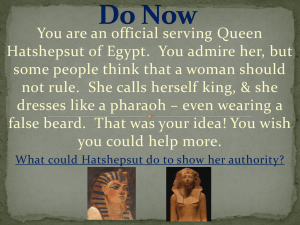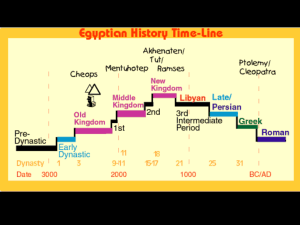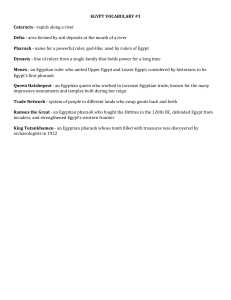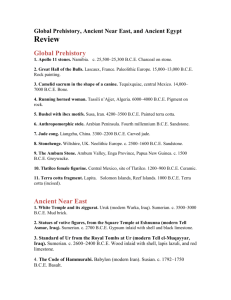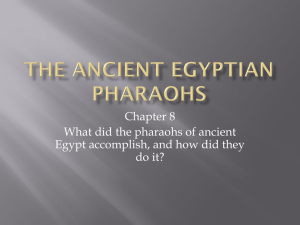Kingdoms of Egypt
advertisement
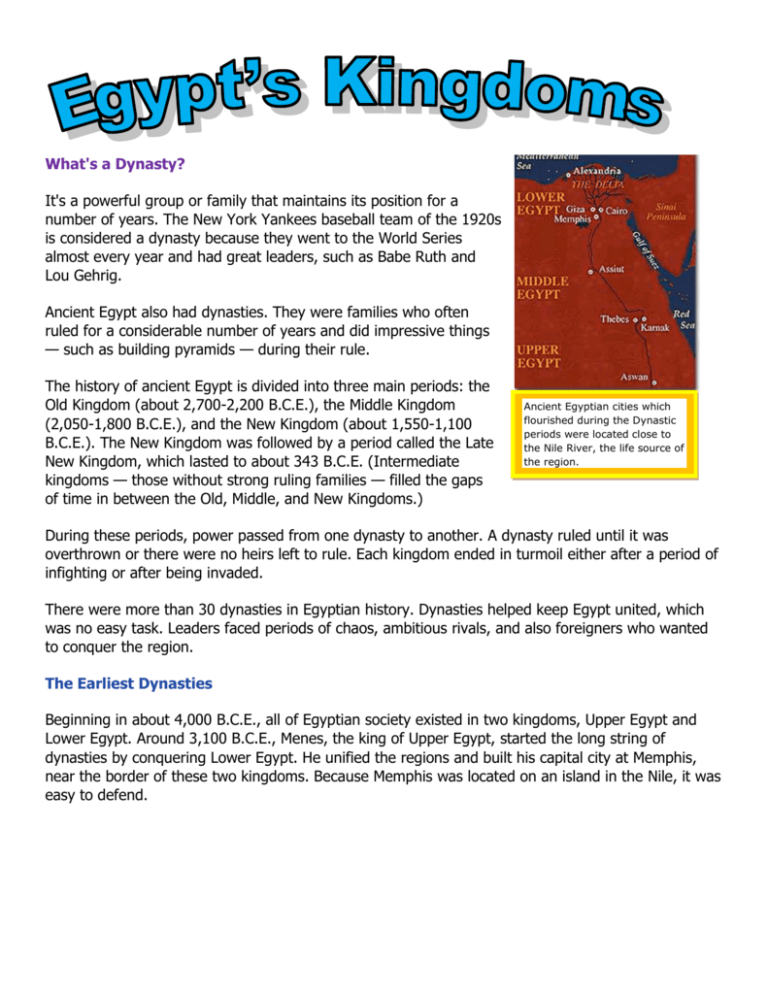
What's a Dynasty? It's a powerful group or family that maintains its position for a number of years. The New York Yankees baseball team of the 1920s is considered a dynasty because they went to the World Series almost every year and had great leaders, such as Babe Ruth and Lou Gehrig. Ancient Egypt also had dynasties. They were families who often ruled for a considerable number of years and did impressive things — such as building pyramids — during their rule. The history of ancient Egypt is divided into three main periods: the Old Kingdom (about 2,700-2,200 B.C.E.), the Middle Kingdom (2,050-1,800 B.C.E.), and the New Kingdom (about 1,550-1,100 B.C.E.). The New Kingdom was followed by a period called the Late New Kingdom, which lasted to about 343 B.C.E. (Intermediate kingdoms — those without strong ruling families — filled the gaps of time in between the Old, Middle, and New Kingdoms.) Ancient Egyptian cities which flourished during the Dynastic periods were located close to the Nile River, the life source of the region. During these periods, power passed from one dynasty to another. A dynasty ruled until it was overthrown or there were no heirs left to rule. Each kingdom ended in turmoil either after a period of infighting or after being invaded. There were more than 30 dynasties in Egyptian history. Dynasties helped keep Egypt united, which was no easy task. Leaders faced periods of chaos, ambitious rivals, and also foreigners who wanted to conquer the region. The Earliest Dynasties Beginning in about 4,000 B.C.E., all of Egyptian society existed in two kingdoms, Upper Egypt and Lower Egypt. Around 3,100 B.C.E., Menes, the king of Upper Egypt, started the long string of dynasties by conquering Lower Egypt. He unified the regions and built his capital city at Memphis, near the border of these two kingdoms. Because Memphis was located on an island in the Nile, it was easy to defend. So began the first dynasty, an age appropriately called the Early Dynastic Period. Little is known of the pharaohs (rulers) of the early dynasties. The Egyptian word "pharaoh" literally means "great house." Pharaohs were more than just rulers. They were considered gods and were believed to possess the secrets of heaven and earth. Pharaohs led the government and the army and wielded unlimited power. The Old Kingdom About 300 years after Menes united Egypt, its rulers formed a central government in which they held supreme power. This was the beginning of the Old Kingdom. (Kings tend to rule from a central place, which is why the early dynastic period is not considered a kingdom.) During the Old Kingdom, pyramid building flourished. Cheops had the six-million-ton Great Pyramid of Giza constructed as his tomb. Under Chephren, a Fourth Dynasty ruler, the Great Sphinx was built. The end of the Old Kingdom was marked by civil wars between pharaohs and nobles. The Middle Kingdom The Middle Kingdom is remembered as a time of flourishing arts, particularly in jewelry making. Egypt became a great trading power during this period and continued massive construction projects. Eventually, the long reign of prosperity gave way to old problems: crop failures, economic woes, dynastic power struggles, and foreign invaders. Amenemhet III (1817-1772 B.C.E.), of the Twelfth Dynasty, was responsible for the construction of two great projects. He completed the building of the giant waterwheels of the Faiyum region that diverted the floodwaters of the Nile. Amenemhet also constructed the Pyramid of Hawara, which became known as the Labyrinth. It contained about 3,000 rooms. Trouble struck when a group of foreigners, the Hyksos, a Semitic-Asiatic group, invaded the Nile Delta region. These advanced warriors used new tools for war: bronze weapons and horse-drawn chariots. They defeated the Egyptians, who fought on foot with copper-and-stone weapons. The New Kingdom Early pharaohs of the New Kingdom evicted the Hyksos. The New Kingdom is remembered as a time of renaissance in artistic creation, but also as the end of dynastic rule. This period was also marred by corrupt priests and tombrobbing by government officials. A famed pharaoh of the new period was Amenhotep IV, who triggered a religious revolution. Before Amenhotep's rule, Egypt was a polytheistic society that believed in many gods, the most important named Amon. But, Amenhotep believed only in Aton, the sun god. Belief in only one god (monotheism) was a radical notion. To show his devotion to Aton, the pharaoh changed his name to Akenhaton ("he who is loyal to Aton"). Akenhaton moved his capital from Thebes, where Amon was worshipped, to Tell el Amarna. Naturally, the priests who represented the other gods did not like this change one bit. Many Egyptians also did not like the pharaoh discrediting their gods. After the death of Akenhaton, the powerful priests forced the new capital to be moved back to Thebes . From the Late Period to Alexander's Conquest (c.664-332 B.C.) Beginning with Necho's son, Psammetichus, the Saite dynasty ruled a reunified Egypt for less than two centuries. In 525 B.C., Cambyses, king of Persia, defeated Psammetichus III, the last Saite king, at the Battle of Pelusium, and Egypt became part of the Persian Empire. Persian rulers such as Darius (522-485 B.C.) ruled the country largely under the same terms as native Egyptian kings: Darius supported Egypt's religious cults and undertook the building and restoration of its temples. The tyrannical rule of Xerxes (486-465 B.C.) sparked increased uprisings under him and his successors. One of these rebellions triumphed in 404 B.C., beginning one last period of Egyptian independence under native rulers (dynasties 28-30). In the mid-fourth century B.C., the Persians again attacked Egypt, reviving their empire under Ataxerxes III in 343 B.C. Barely a decade later, in 332 B.C., Alexander the Great of Macedonia defeated the armies of the Persian Empire and conquered Egypt. After Alexander's death, Egypt was ruled by a line of Macedonian kings, beginning with Alexander's general Ptolemy and continuing with his descendants. The last ruler of Ptolemaic Egypt-the legendary Cleopatra VII--surrendered Egypt to the armies of Octavian (later Augustus) in 31 B.C. Six centuries of Roman rule followed, during which Christianity became the official religion of Rome and its provinces (including Egypt). The conquest of Egypt by the Arabs in the seventh century A.D. and the introduction of Islam would do away with the last outward aspects of ancient Egyptian culture and propel the country towards its modern incarnation.

